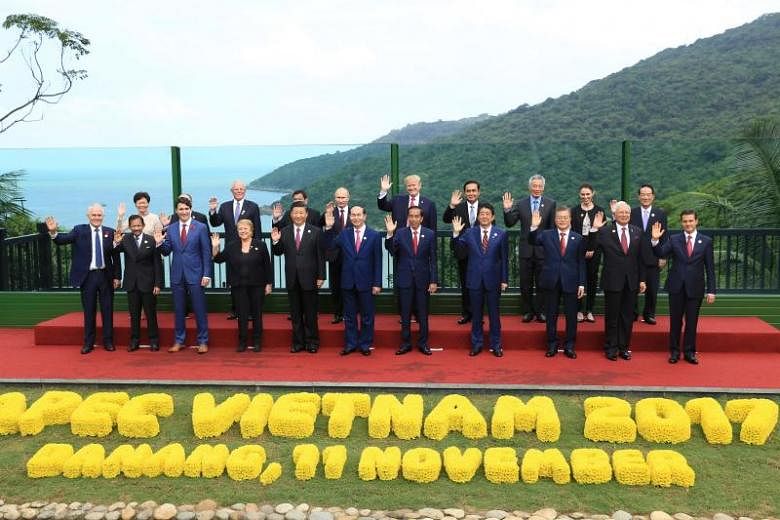DANANG - A roller-coaster of emotions. That's probably the most apt way to describe what the 11 nations involved in the Trans-Pacific Partnership (TPP) trade pact went through over the past few days.
There were loud cheers and back-slapping among ministers and negotiators on Thursday night when it seemed they had, at long last, come to a consensus on how to move on without the United States.
That jubilation went flat the next day when a scheduled meeting of TPP leaders, on the sidelines of the Asia-Pacific Economic Cooperation summit here in Danang, was canned when Canada's Prime Minister Justin Trudeau did not turn up. His trade minister blamed it on "a misunderstanding about the schedule", and nothing more.
To some, Mr Trudeau's no-show wasn't a complete surprise as he had stressed earlier that he would not be pushed into agreeing on a deal unless he was absolutely sure it was beneficial to his people.
There was, however, to be one final twist in the tale. Early yesterday morning, all the trade ministers reaffirmed that they had an in-principle agreement to bring the pact into effect.
Consensus was reached after 20 mostly intellectual property- related provisions of the TPP - now known as the Comprehensive and Progressive Agreement for the Trans-Pacific Partnership (CPTPP) - were suspended. The deal, thought to be stalled indefinitely, was back on the cards in a big way.
While significant progress has been made, and the ministers deserve some credit for their steely resolve, there's still a long road ahead. A new legal text needs to be drafted and signed by all the parties. Only then can the 11 countries begin the tough job of winning their respective parliamentary approvals.
Once that is done, a simple majority of at least six countries must ratify the agreement before it can enter into force. One of the biggest hurdles to overcome is convincing the naysayers that the CPTPP can still be regarded as a "gold standard" free trade agreement (FTA), now that the US is formally out of the picture.
The TPP would have been the largest FTA in the world, covering 40 per cent of global GDP. Though the new CPTPP accounts for only 13.5 per cent of global GDP, it still boasts a population of nearly 500 million and total trade in excess of US$5 trillion (S$6.8 trillion).
These are still big numbers, and while countries like Vietnam and Malaysia still lament the absence of the world's largest economy, many will enjoy access to several new markets and improved access to others. Australia, for instance, will have new trade agreements with Canada and Mexico, and greater scope to do business in places like Japan, Chile and Vietnam.
It's also worth noting that the door remains open to the US.
When President Donald Trump yanked the US out of the TPP in January, it was as if the death knell had sounded for the ambitious grouping. The breakthrough, against the odds, in Danang has proven otherwise.

